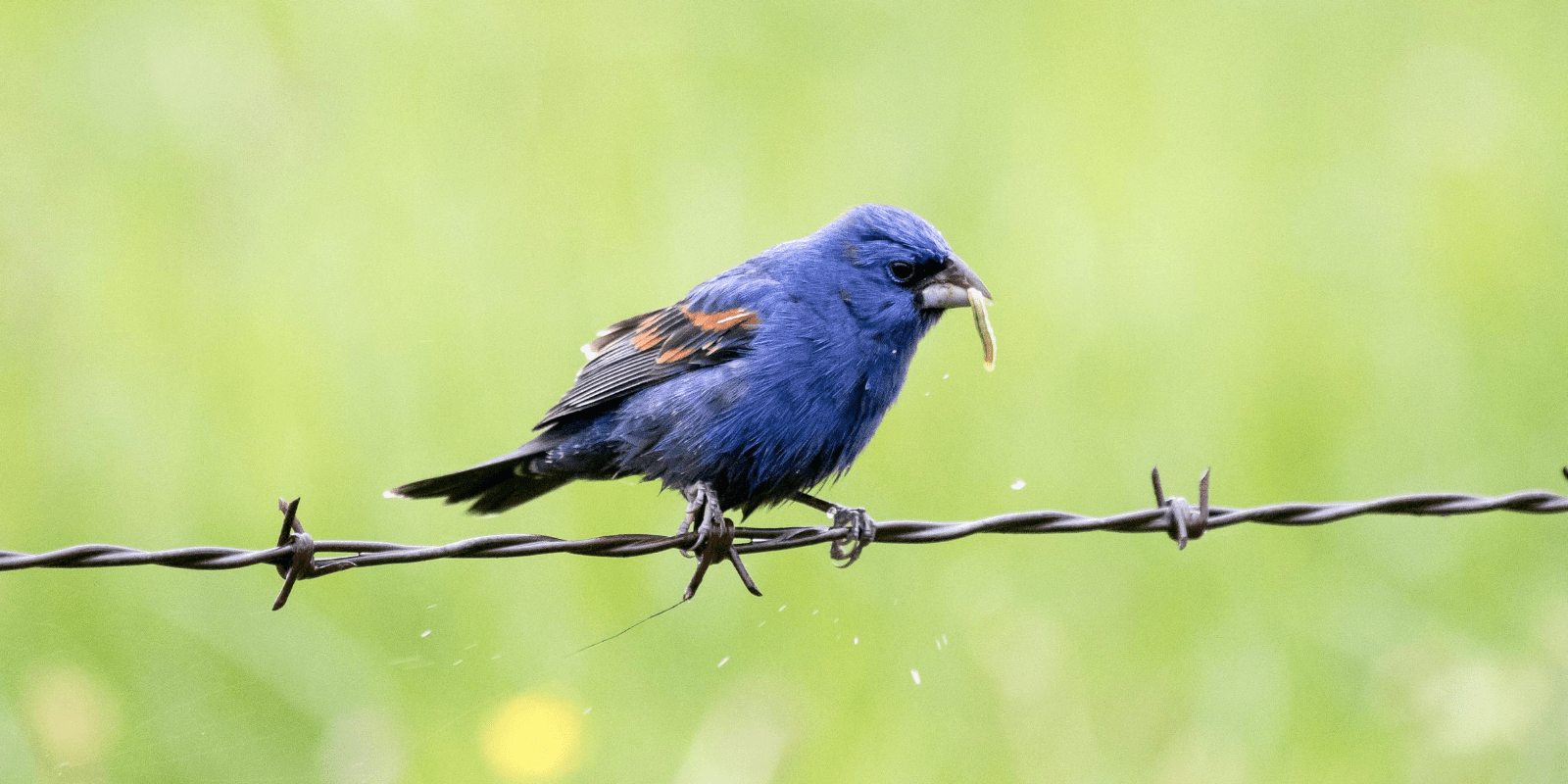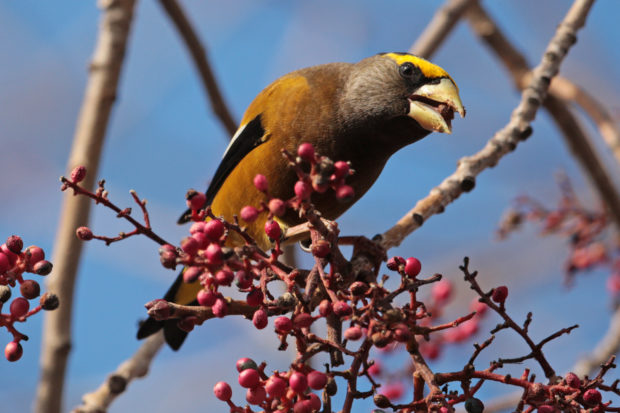We have much more to do and your continued support is needed now more than ever.
Drifting Disaster: How Certain Herbicides Destroy Native Bird Habitat

Perhaps you have heard about the millions of acres of soybean damages recently caused by the herbicide dicamba in the midwestern and southern parts of the country. However, it is less likely that you have heard about the damage this herbicide is causing to native plants and trees and the wildlife these plants support.
Dicamba is used on over 60 million acres across the country, despite the fact that it is highly volatile, meaning it easily evaporates from plant and soil surfaces, and can continue evaporating for days after application. The precipitous increase in dicamba use across millions of acres of crops in recent years is causing damage more than a mile from treated crop fields, especially during warmer weather. This toxic drift threatens nearby forests, native prairies, parks, and the beloved backyard and well-stewarded roadside gardens throughout the Midwest.
Damage from herbicide drift could harm plants that host invertebrates such as migrating butterflies that rely on bee balm, for example, which has shown reduced flowering as a result of dicamba injury. Dicamba drift can also harm native trees or plants that produce seeds, both of which are important sources of food for birds such as grosbeaks. Certain chickadees, buntings, and finches that depend on seeds are known to be particularly vulnerable to increased use of herbicides due to impacts on food availability. Box elder trees are particularly sensitive to herbicide drift and almost 300 species of Lepidoptera (moths and butterflies) depend on this tree for food and shelter to get them through their caterpillar stage. These are in turn an essential food resource for birds.

Over 90 percent of terrestrial bird species feed their young on insects, and caterpillars are one of the main sources of protein for young birds. Reduced caterpillar biomass or survival on herbicide-affected plants could have cascading impacts up the food chain; insectivorous birds might need to travel farther or collect many more caterpillars in order to feed their young. Dicamba could also impact birds through its effect on bird habitat.
The National Wildlife Federation, along with the Xerces Society and Prairie Rivers Network, have just released a report highlighting the impacts to native plants, pollinators, and other wildlife from dicamba drift. This report outlines the little we do know about ecological impacts from dicamba — but also what we don’t know and why that is a cause for alarm given the damage we are already seeing.
For example, we don’t know how much these herbicides are volatilizing into the atmosphere or where and how far they are travelling, and at what rates they are landing on unintended plants. We also don’t know the short and long-term impacts to herbaceous and woody plants and how nectar and pollen production, seed or fruit production, and plant fitness are being affected. With current rates of dicamba use and potential increases in the future, will we see species composition in critical habitat areas shift? We don’t know what multiple exposures throughout the year — exposures that also happen to coincide with the delicate flowering time of native trees and plants –do to these plants over the long term. We don’t know the extent of damage to wildlife that rely on these impacted plants or use waterways where these herbicides dissolve. There are far too many unknowns about the ecological impacts of dicamba herbicides to proceed with their widespread use.

How Can You Help Protect Birds and Their Habitat?
Policymakers need to take a range of steps over the short and long terms to limit the destructive effects of dicamba, as we outline in the report. Help us raise the alarm on the impacts of these herbicides. We are at a critical juncture where the Environmental Protection Agency’s decision could greatly increase the amount of herbicides like dicamba on the landscape with no way to turn around. Please take action by letting the agency know it should not register dicamba until and unless we have better research and evidence of no long term harm to ecosystems.
Take Action!
Be on the lookout for dicamba damage! For a comprehensive catalog of herbicide injury symptoms, you can refer to the Prairie Rivers Network’s library for photographic examples. If you suspect damage from herbicide drift on your plants or trees, please monitor, document, and report symptoms to your state Department of Agriculture or Pesticide Agency. You can find more information about this process in our report, an overview of the dicamba complaints process from the EPA, and refer to this handy guide to the types of information to have on hand in order to submit complaints. For more resources on ecological pest management in agriculture, you can find information on the Xerces pesticides website. Finally, you can always make a difference for birds and other pollinators by gardening for wildlife wherever you live.





















